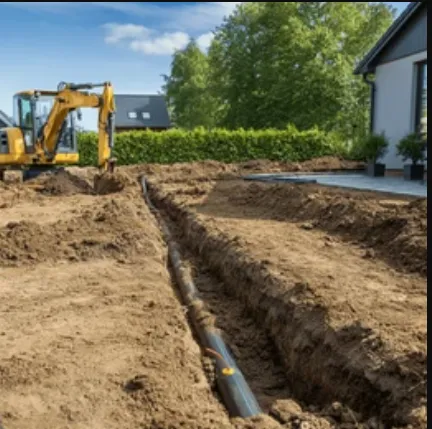Digging near underground utilities can be risky if not handled properly. Striking pipes or cables can lead to expensive repairs, service disruptions, and even dangerous situations like gas leaks or electrical shocks. Whether you’re planting trees, installing a fence, or doing construction work, following the right steps is essential to avoid costly mistakes. Methods like Hydro Excavation Auckland provide a safe and effective way to expose utilities without causing damage. Here’s how to ensure you dig safely and protect your property from avoidable expenses.
Step 1: Locate and Mark Utility Lines
Before starting any digging project, it’s crucial to know exactly where underground utilities are located. Buried pipes and cables can vary in depth and position, so don’t assume they are far from the surface.
How to locate utility lines:
- Call local utility companies: Many areas offer a “Call Before You Dig” service, which sends professionals to mark the locations of gas, water, electrical, and communication lines.
- Use ground-penetrating radar: For large or complex projects, this technology can help identify underground utilities.
- Check property plans: If you have site maps or blueprints, use them to verify known locations of utilities.
Marking the utilities with paint or flags will help you identify areas where extra caution is needed.
Step 2: Use the Right Digging Method
Choosing the right method for excavation is key to preventing damage. Traditional digging with shovels or heavy machinery can be risky, especially in areas with dense utility networks.
Hydro excavation is one of the safest options for digging near pipes and cables. This non-invasive technique uses high-pressure water to break up the soil and a vacuum system to remove it, reducing the risk of accidental strikes. Hydro Excavation Auckland is commonly used for projects requiring precision, such as utility maintenance, landscaping, and construction in urban areas.
Benefits of hydro excavation:
- Minimizes the risk of damaging utilities
- Provides accurate exposure of pipes and cables
- Reduces soil disruption, making it ideal for sensitive areas
Step 3: Hand Dig When Necessary
When working close to marked utility lines, avoid using heavy machinery directly above them. Instead, use hand tools to carefully dig around the area.
Tips for hand digging:
- Use shovels with rounded edges to reduce the chance of puncturing pipes or cables.
- Dig slowly and methodically, removing small amounts of soil at a time.
- Maintain a safe distance from utility lines to prevent accidental contact.
Hand digging may take longer, but it’s often necessary when precision and safety are top priorities.
Step 4: Monitor Soil Conditions
Different types of soil can affect how easily you can dig and how well utility lines are protected. For example, loose or sandy soil can shift easily, potentially exposing or damaging underground utilities.
What to consider:
- Loose soil: Be extra cautious, as utility lines may be closer to the surface.
- Rocky areas: Take care when breaking up hard ground, as rocks can deflect digging tools and cause accidental strikes.
- Wet soil: Excess moisture can weaken the ground and increase the risk of pipe movement or breakage.
Monitoring the soil conditions can help you adjust your digging method accordingly and prevent unnecessary damage.
Step 5: Follow Safety Guidelines
Working near underground utilities involves inherent risks, so it’s essential to follow safety guidelines to protect yourself and your property.
Safety precautions to take:
- Wear personal protective equipment (PPE): This includes gloves, safety goggles, and steel-toed boots.
- Maintain communication: Keep your team informed of utility locations and potential hazards.
- Watch for warning signs: Be alert for gas smells, water seepage, or electrical sparks, and stop work immediately if you encounter them.
